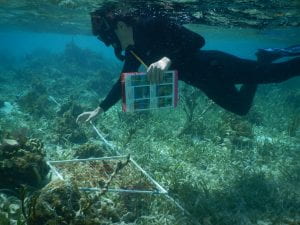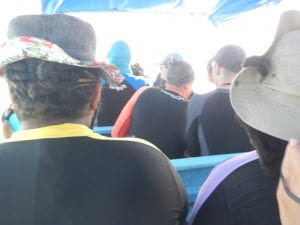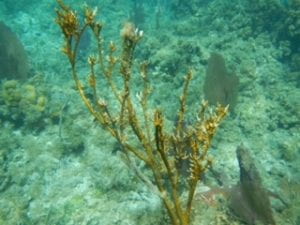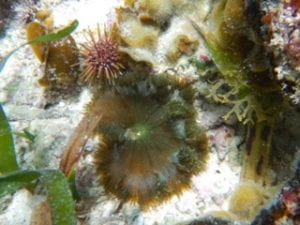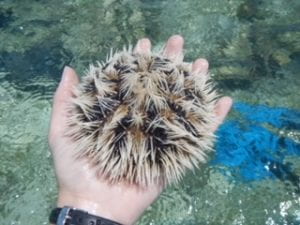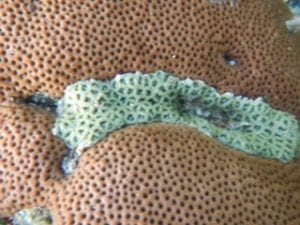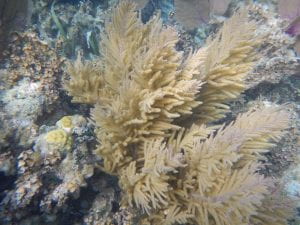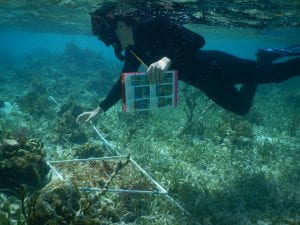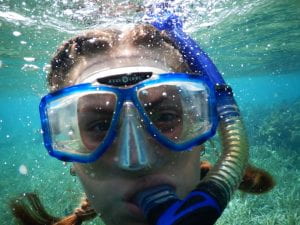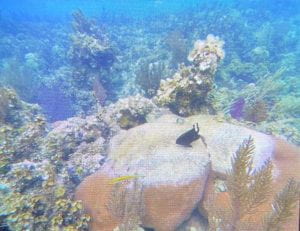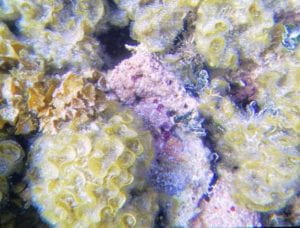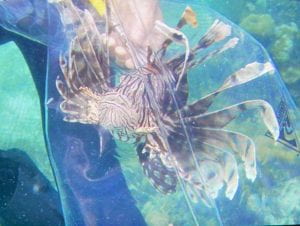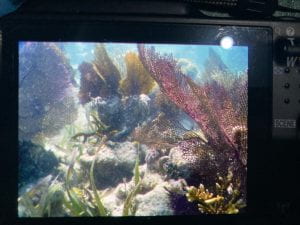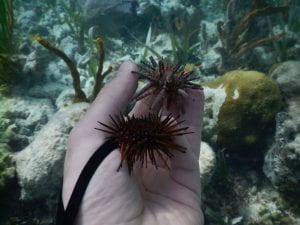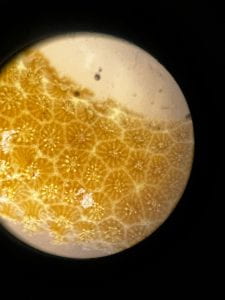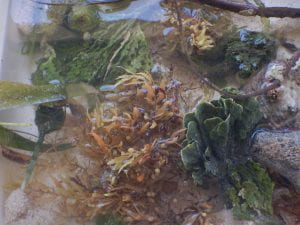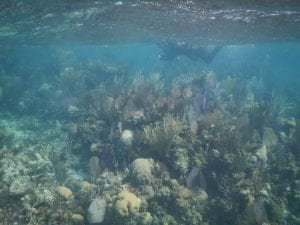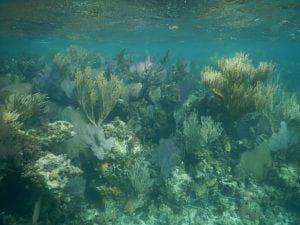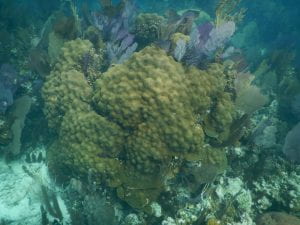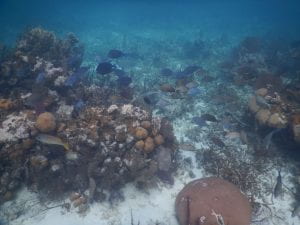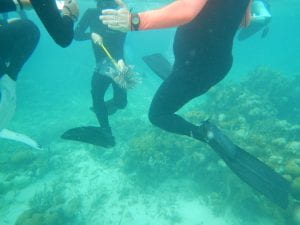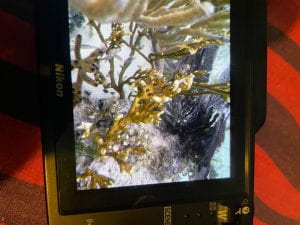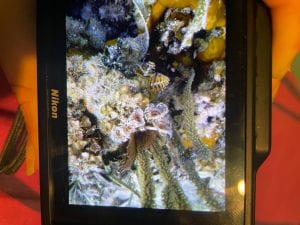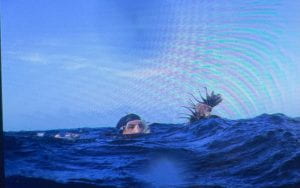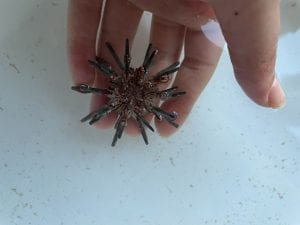Hey guys! It’s Michiel again : )
We started this morning with breakfast (big surprise) before going out to collect more data for the research question we started on yesterday. The first reef we went to was in the Marine Protected Area, and it was deeper than the reef we went to yesterday. It also had a lot of sea grass, algae, and dead coral. Ava and I laid out our transects and quadrats and counted a lot of coral all over the reef. While we were doing this, Ava took a picture of me counting squares in my quadrat, and I’m sharing it here (once again, thank you Ava)! After collecting this data, we were sent out to collect sea urchins. I found a lot in coral crevices, but these were really difficult to pull off of the coral. However, that did not deter me from trying. I ended up getting two sea urchins, but as I tried to get another one, the crevice my hand was in had fire coral. Thankfully, only my pinky brushed up against it, but I definitely had a burning sensation there for about an hour. It was worth it, though, because we ended up collecting 52 sea urchins! Additionally, I believe I saw a male Bluelip Parrotfish (Cryptotomus roseus), and I definitely saw more Ocean Surgeonfish (Acanthurus bahianus) and Blue Chromis (Chromis cyanea). Scott also took a video with a damselfish in it that kept making its signature popping sound to show aggression. Damselfish are aggressive toward other fish that come near their algal gardens because they don’t want those fish to eat the algae they’ve worked so hard to cultivate.
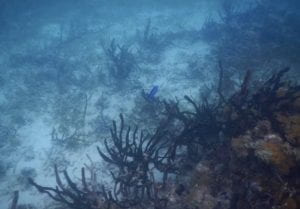
After this, we went to another reef in the Marine Protected Area. This reef was much shallower than the other one; it was about as shallow as the reef we went to yesterday. We did manage to collect our data better in this reef than the one from yesterday, though, because the waves were not nearly as strong as yesterday’s. However, Ava and I were very scared we would touch some fire sponge because it was absolutely all over the reef and we were swimming only inches above it. After collecting our data, we were out on the hunt for sea urchins once again. I collected two sea urchins again, but I learned my mistake from last time and only tried to collect them from beneath coral rubble instead of from inside coral crevices. In total, we collected 56 sea urchins from this area!
On our way back to the island, I noticed that I got a sunburn on my hands, so I’m really excited for the tan I’m about to get that starts at my fingers and ends at my wrists. On the island, we had lunch and were given the option to participate in an optional snorkel activity. I opted out of the activity because I was so drained from this morning, but I spent the afternoon working on my field notebook, messaging some friends, and reading my book. I’m very glad I chose to rest.
At the end of the break, we had dinner, were given presentations on the Belize Fisheries Department and the Belize Coast Guard. Overall, today began with lots of work and ended with a well-deserved break. I’m excited to go out onto the reef again tomorrow to collect more data and see more fish!

